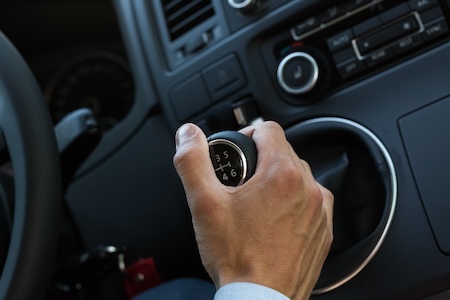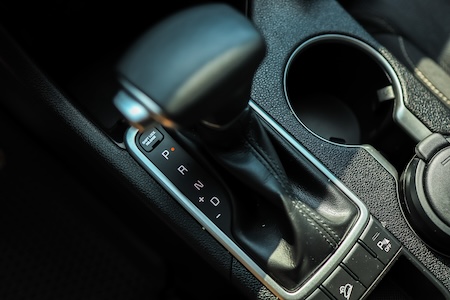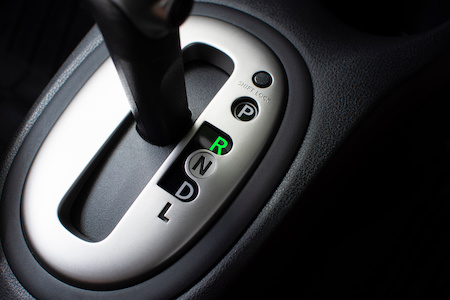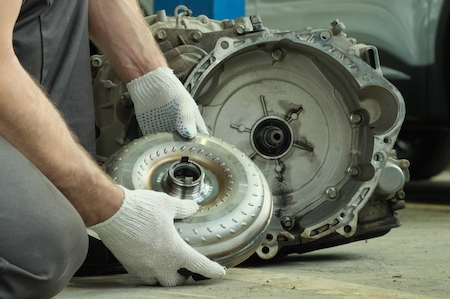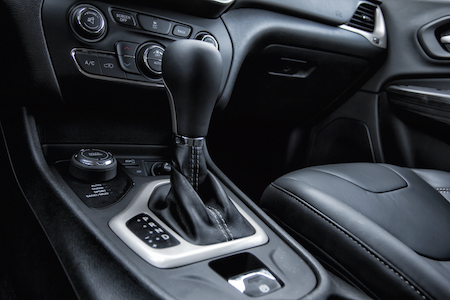Want to know how to prevent your transmission from bringing your car to a grinding halt?
Your transmission is one of the most vital – and expensive – systems in your vehicle. Yes, it’s important to keep it working for those weekends away to Winter Park or Vail. But it’s equally important when you’re navigating stop-and-go traffic on I-25 on your way to work. Rain or shine, three feet of snow or dry roads, keeping your transmission in good shape should be high on your list of maintenance priorities.
But how often should you service it, especially here in Denver?
The transmission is critical to your vehicle’s performance. It’s a complex mechanical system that transfers power from the engine to the driveshaft and wheels. Even if you service your vehicle regularly, there’s still a chance that you may encounter transmission troubles over the years. But if you don’t, you’re almost guaranteed.
A recent survey on car repairs revealed that transmission issues were among the top five most common car repairs.
It’s time to bring your car in for transmission maintenance.
What Does Transmission Service Include?
Yes, different auto shops may approach this differently. And transmission service can vary depending on your vehicle’s make, model, and whether you have an automatic or manual transmission. In most cases, a routine transmission service will include:
- Draining and replacing transmission fluid
- Changing or cleaning the transmission filter
- Inspecting the transmission pan and gasket
- Checking for leaks or wear
- Ensuring proper fluid levels and pressure
More in-depth service may include a full transmission flush or software updates for newer vehicles with electronic systems.
For most vehicles, the rule of thumb is to service your transmission every 30,000 to 60,000 miles. However, that’s a broad range, and there are exceptions.
Some newer vehicles with “lifetime” transmission fluid may not list a service interval at all. But “lifetime” doesn’t always mean forever. Depending on your driving conditions, you may need service much sooner than the manufacturer’s optimistic schedule.
Which brings us to the next important point …
Why Denver Drivers Need to Pay Extra Attention
Denver’s driving environment puts extra stress on your transmission. Here’s why:
- High Altitude – Engines and transmissions work harder in thin air. This can lead to increased wear, especially when towing or driving up into the mountains.
- Extreme Temperature Swings – Denver’s freezing winters and hot summers cause thermal stress that affects transmission fluid, seals, and gaskets.
- Hilly Terrain – Whether you’re commuting across town or escaping to the Rockies, constant elevation changes require frequent shifting and engine braking.
- Stop-and-Go Traffic – City driving increases transmission activity. That means more heat and wear, especially during rush hour.
If you’re doing a lot of urban driving, towing, hauling gear, or heading into the mountains on weekends, your transmission fluid can break down faster, meaning you’ll need to service it more frequently.
For many Denver drivers, every 30,000 miles is a smart rule to follow, regardless of what the manual says. Of course, you can talk with one of our mechanics to determine the right schedule for your unique situation.
Signs Your Transmission Needs Service Sooner
Even if you’re not close to a recommended mileage mark, your car may be telling you something is wrong. Keep an eye (and ear) out for:
https://denverexpresscare.com/understanding-the-signs-of-transmission-problems-and-how-to-fix-them
- Delayed or jerky shifting
- Grinding or whining sounds
- Slipping gears
- Transmission fluid leaks under the vehicle
- Burning smell
- Check engine or transmission warning light
Transmission problems rarely fix themselves. Catching these early can mean the difference between a simple fluid change and a major rebuild.
What’s the Difference Between a Transmission Flush and a Fluid Change?
Good question. You may hear these terms used interchangeably, but they’re not the same.
- Fluid Change: Drains about 40-60 percent of the old transmission fluid, replaced with new fluid. It’s less aggressive and more common.
- Flush: Uses a machine to completely remove all old fluid, including what’s in the torque converter, and replaces it entirely. It may be recommended if fluid is heavily degraded or contaminated.
A flush isn’t always necessary. In some older, high-mileage cars, it can even dislodge debris and cause issues. That’s why it’s best to talk with your trusted mechanic before deciding.
Manual vs. Automatic Transmission Maintenance
If you drive a manual, you’ll still need transmission service, just a different kind. Manual transmissions use gear oil instead of automatic fluid, and while they may require less frequent service, they’re not maintenance-free.
- Manual transmission service interval: Often every 30,000 to 60,000 miles.
- Automatic transmission service interval: 30,000 to 60,000 miles, but sometimes sooner in harsh driving conditions.
CVTs (continuously variable transmissions) are becoming more common, and they have unique fluid requirements. Always use the manufacturer-recommended CVT fluid and follow their service schedule closely. Using the wrong fluid can cause serious damage.
Why DIY Transmission Service Isn’t Always a Good Idea
We get it, DIY can be appealing. But transmission service is one of those jobs where things can go sideways fast.
- The fluid must be checked and filled precisely (sometimes at specific temperatures).
- You’ll need the right type of fluid, and it’s not one-size-fits-all.
- Modern transmissions are often sealed systems that don’t even have a dipstick.
- Small mistakes can lead to big repair bills.
This is definitely a job best left to a certified mechanic. We’ve seen what happens when a quick fix turns into a costly mistake.
Protect Your Investment—Get on a Schedule
Servicing your transmission might not be top of mind … until it fails. And by then, it could cost thousands to repair.
Think of transmission service like changing your oil. It’s one of those proactive things you do to avoid problems later on. Even if your vehicle manual doesn’t scream it loudly, a trusted mechanic will.
We recommend:
- Inspection at every major service interval
- Additional checks after mountain trips, towing, or heavy use
- Paying attention to potential signs of transmission trouble
- Work with a mechanic to determine the best schedule for a transmission fluid change
And if you’ve recently bought a used vehicle and aren’t sure of its service history, play it safe. A quick transmission check can save you a lot of heartache down the road.
Not sure when your last transmission service was? Stop by our shop and we’ll take a look. We’ll check your fluid, review your service history, and recommend a plan that fits your vehicle and your lifestyle.

